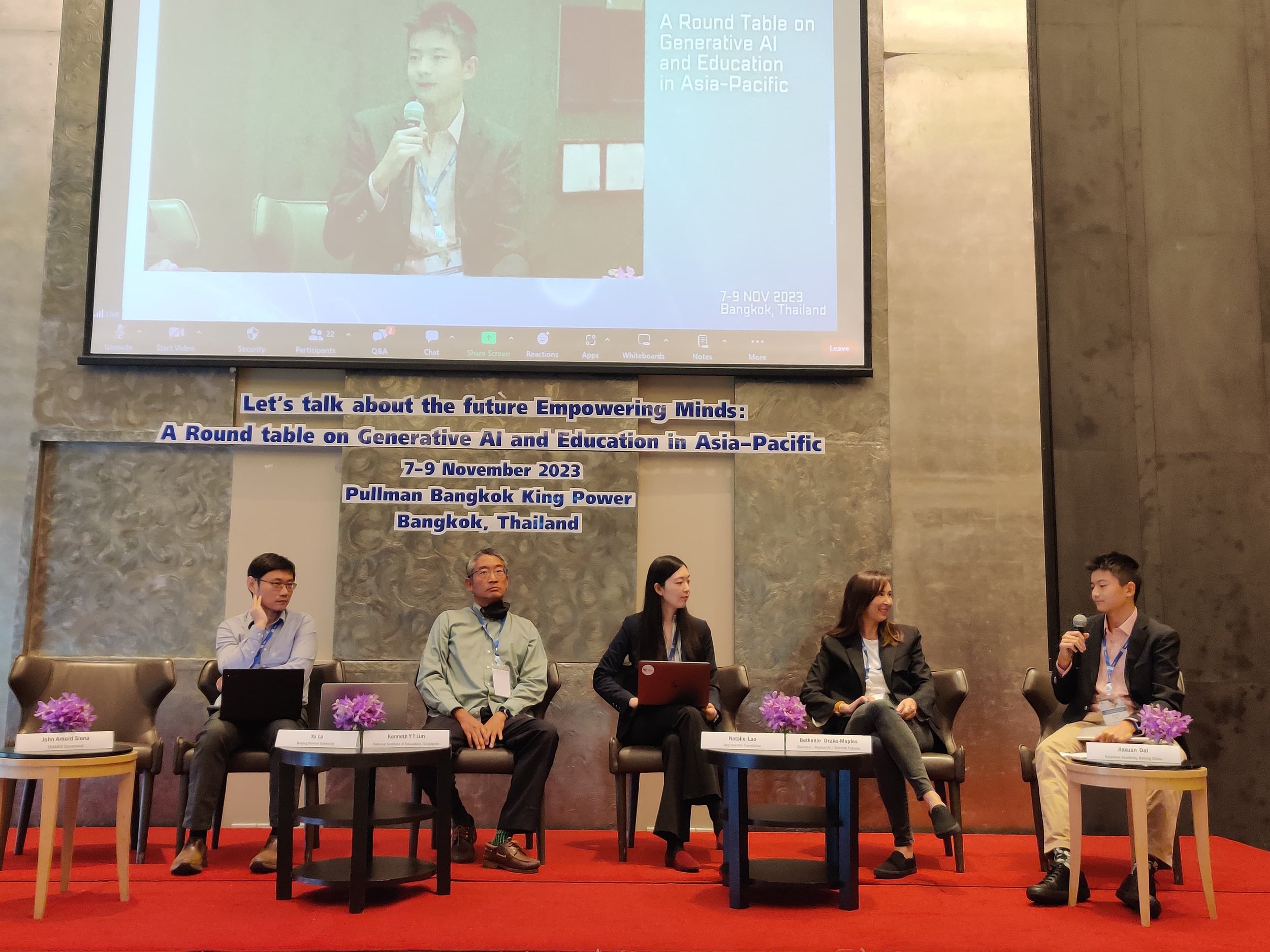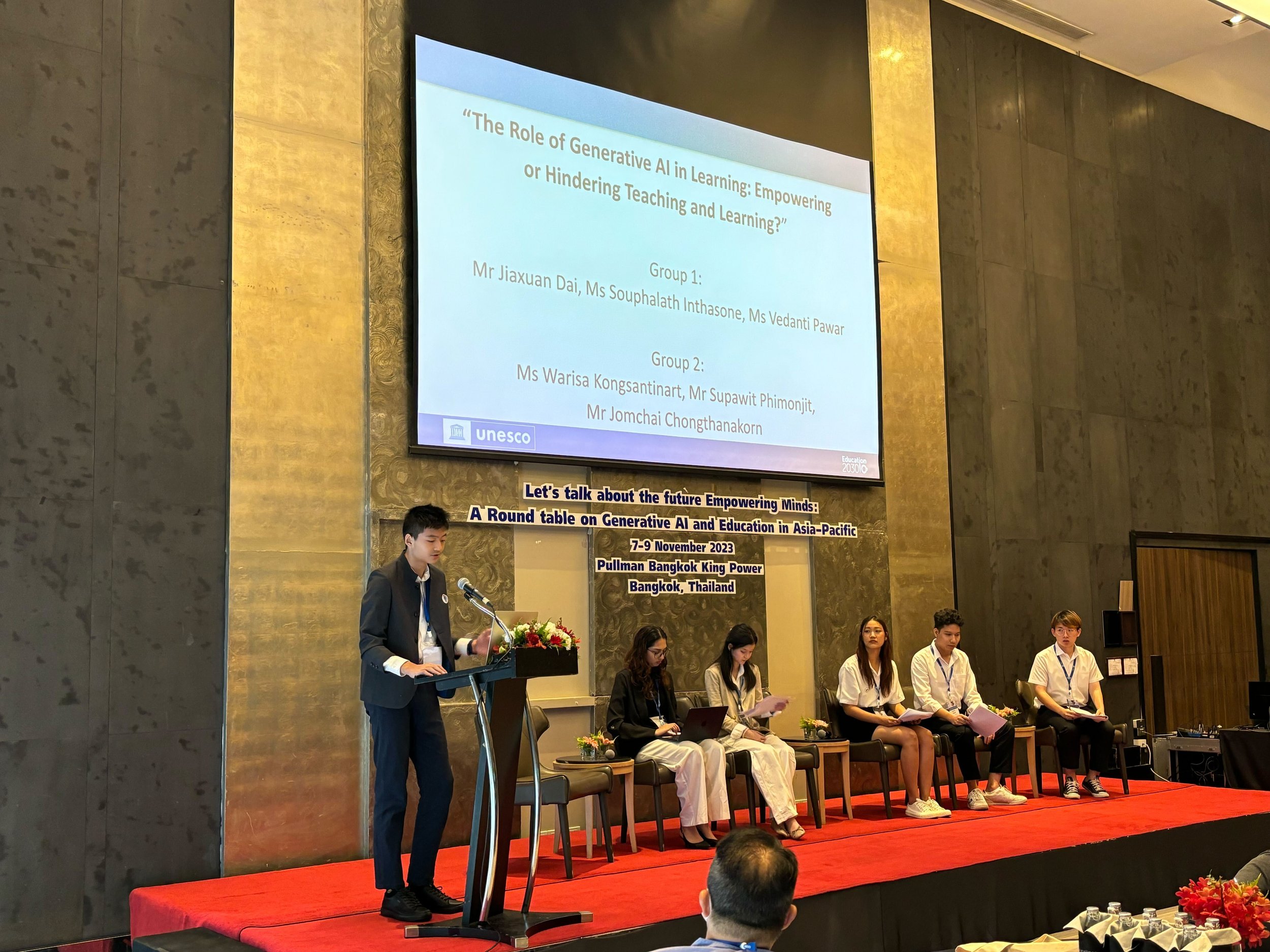Press Enter for the Next Generation
Jiaxuan Ethan Dai, a 13-year-old app developer from China, sees generative AI as a vital educational tool for himself and his peers.
Ethan Dai (left) debates the benefits and risks of generative AI with other youth at the UNESCO Round Table on Generative AI and Education.
In third and fourth grade I was obsessed with creating video games using Scratch. Being able to design games amused me. In fifth grade, I became interested in solving problems using algorithms. After spending five hours on an issue and finally solving it, I felt delighted. I wished to combine creative coding with problem-solving.
Fortunately, MIT App Inventor allowed me to create apps without learning a new coding language. The recent news of GPT-3 inspired me to create generative AI-powered apps using App Inventor. I developed an app called Avid Reader that uses generative AI to assist students in intensive reading tasks. It summarizes books to help students select which ones to read, and it generates a list of reading comprehension questions for students to check their understanding. Avid Reader was named the winner of the Youth Individual Track in the 2023 App of the Season competition hosted by the App Inventor Foundation. I was invited to present my work at the UNESCO Round Table on Generative AI and Education held in Bangkok, Thailand, in November 2023. I arrived at the conference ready to share my experience of utilizing generative AI and learn more about this technology from my peers.
Interacting with AI Tools
The first panel I participated in discussed the potential implications of AI in education. I decided to talk about my experience developing apps using AI. The most crucial step in creating an app is finding the right problem to solve. In other words, we should start with observations of our surroundings. Then, we can combine a spectrum of generative AI tools to tackle the problem without building AI models ourselves. With App Inventor’s convenient platform and ChatGPT API, the execution process becomes more straightforward, and the idea becomes more valuable.
Avid Reader is a ChatGPT-enabled mobile app that assists students with intensive reading tasks.
I also touched on how best to interact with AI tools. Generative AI should not be treated as a search engine or a black box. Instead, the most effective way to utilize generative AI is to have conversations with it, ask follow-up questions, and receive feedback. For instance, in Avid Reader, the user gets reading comprehension questions from ChatGPT and then asks ChatGPT for feedback.
During the discussion, I learned about the concept of “prompt engineering,” or designing prompts such that generative AI produces the desired output. Prompt engineering is an important skill, because in this era, AI plays a crucial role in our everyday life. With prompt engineering, generative AI can become an assistant or companion to us rather than a mere machine.
The Risks of Generative AI
In addition to the panel discussion, I participated in a youth debate about generative AI’s potential pros and cons. My teammates and I discussed how educating students about AI can prepare them for future career opportunities. Meanwhile, our opponents offered the perspective that the lack of explainability of AI algorithms could serve as a risk and threat. I had initially only considered cheating and false information as the main risks of generative AI. After the debate, I realized that algorithmic bias and lack of transparency are also issues yet to be solved.
“Generative AI should not be treated as a search engine or a black box. Instead, the most effective way to utilize generative AI is to have conversations with it.”
From other presentations throughout the conference, I learned that generative AI could cause inequity along several dimensions. The first dimension is information inequity. Given that AI technology is most accessible in countries with advanced economies, other parts of the world may be left behind, causing the information gap to widen. The second type of inequity is algorithmic bias. The mechanism behind ChatGPT favors amplifying the most dominant voices, which will diminish minority voices even further.
Looking Ahead
After the conference, I felt motivated to continue my journey of developing apps using generative AI to address real world problems and challenges. When building apps, I plan to address the risks of generative AI by tuning the parameters and making more rigorous prompts. I could also engineer my prompts to ask generative AI for a spectrum of responses intentionally. This will help reduce algorithmic bias and give space for diverse perspectives. As an app developer, I will continue to investigate how to address generative AI risks from the programming side so that users can leverage the benefits of the technology while mitigating its risks.





